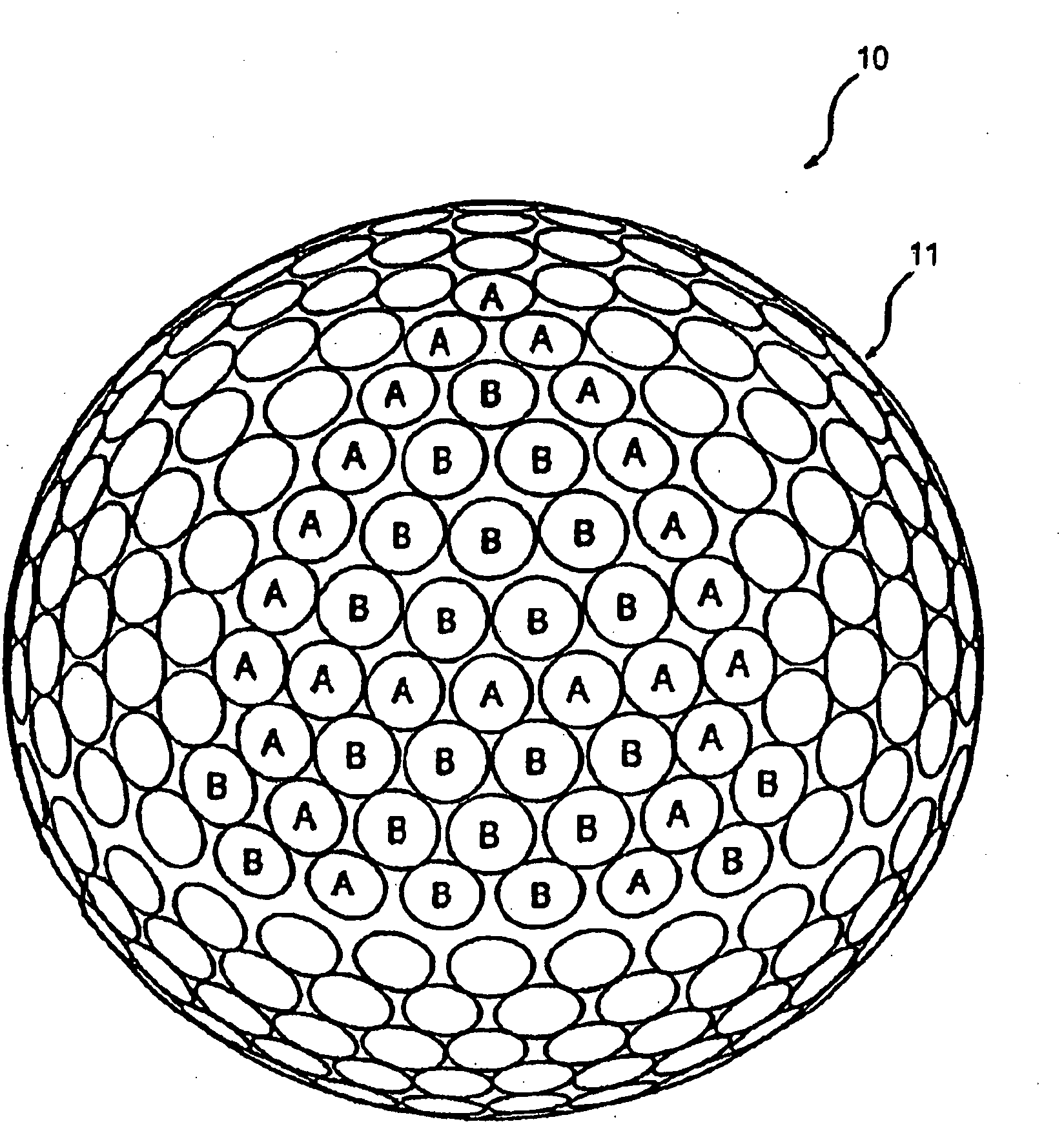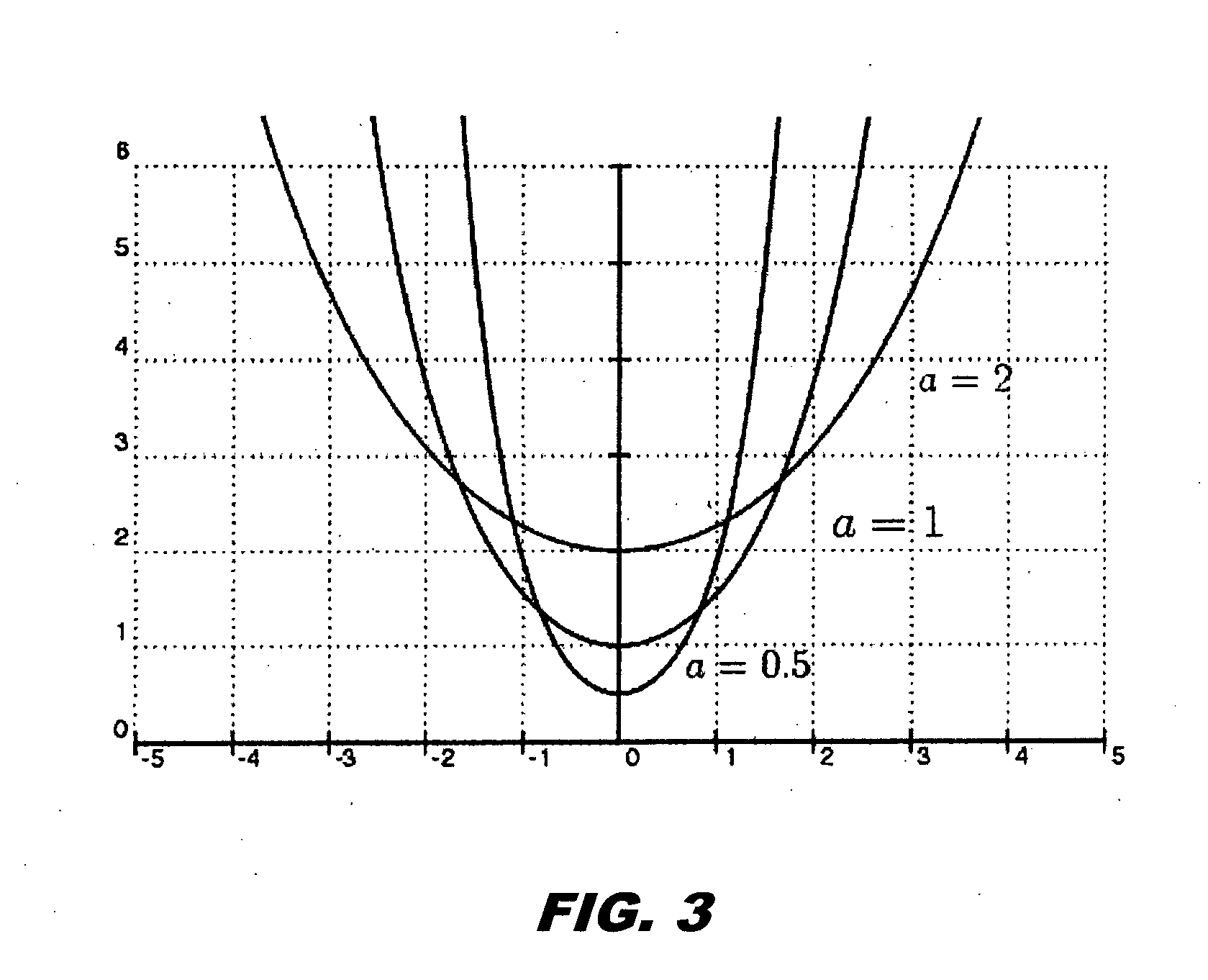Golf ball dimples with a catenary curve profile
- Summary
- Abstract
- Description
- Claims
- Application Information
AI Technical Summary
Benefits of technology
Problems solved by technology
Method used
Image
Examples
Embodiment Construction
[0051]The present invention is directed to golf balls having improved aerodynamic performance due, at least in part, to the selection of dimple arrangements and dimple profiles. In particular, the present invention is directed to a golf ball that includes at least a portion of its dimples that are defined by the revolution of a catenary curve about an axis.
[0052]The dimple profiles of the present invention may be used with practically any type of ball construction. For instance, the golf ball may have a two-piece design, a double cover, or veneer cover construction depending on the type of performance desired of the ball. Other suitable golf ball constructions include solid, wound, liquid-filled, and / or dual cores, and multiple intermediate layers. Examples of these and other types of ball constructions that may be used with the present invention include those described in U.S. Pat. Nos. 5,713,801, 5,803,831, 5,885,172, 5,919,100, 5,965,669, 5,981,654, 5,981,658, and 6,149,535, as w...
PUM
 Login to View More
Login to View More Abstract
Description
Claims
Application Information
 Login to View More
Login to View More - R&D
- Intellectual Property
- Life Sciences
- Materials
- Tech Scout
- Unparalleled Data Quality
- Higher Quality Content
- 60% Fewer Hallucinations
Browse by: Latest US Patents, China's latest patents, Technical Efficacy Thesaurus, Application Domain, Technology Topic, Popular Technical Reports.
© 2025 PatSnap. All rights reserved.Legal|Privacy policy|Modern Slavery Act Transparency Statement|Sitemap|About US| Contact US: help@patsnap.com



